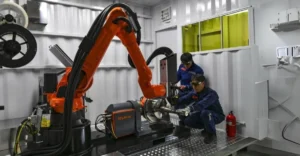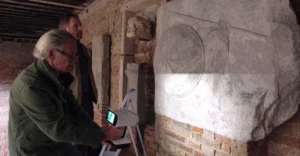FIU researchers deploy 3D-printed tiles to transform seawalls into eco-friendly marine habitats, enhancing biodiversity and coastal resilience.
A revolutionary, 3D-printed tile system developed at Florida International University (FIU) offers a “stepping stones” approach to turn spent seawalls into artificial reefs and is the first of its kind size and scale to do so. BIOCAP, the modular concrete structure, brings together eco-design and high technology, to help enhance the biodiversity, limit erosion and improve water quality along the edge of urban areas.
Inspired by Florida’s natural coastal geology, the project funded by the National Science Foundation and Environmental Protection Agency, is headed by FIU doctoral candidate Sara Pezeshk. The tiles have concave and convex faces, with grooves, crevices and pockets similar to fossiliferous limestone, providing microhabitats for filter-feeding creatures such as oysters and sponges. These creatures are beneficial in clearing up turbidity and algal bloom and stabilizing sediment.

“Standard seawalls reflect wave energy, worsening erosion and stripping away habitats,” Pezeshk explained. “BIOCAP reimagines infrastructure as a dynamic interface that supports ecological processes.”
The system, fabricated using additive manufacturing, allows precise control over porosity and geometry to maximize thermal variability and biological colonization. A Voronoi-based design enables flexible tile arrangements that adapt to tidal shifts and water flow, contrasting with traditional static seawalls.
A two-year pilot installation at Morningside Park in Miami, targeted for spring 2025, will demonstrate BIOCAP’s performance in real-world use. Researchers say sensors built into prototype tiles will measure water quality factors such as pH and dissolved oxygen, along with pressure sensors that measure the reduction of wave energy. Marine life colonization will be recorded with timelapse cameras.
Read more : Proto21 & MYATA Achieve 3D Printing World Record in Dubai
If successful, the retrofit strategy could scale to other urban coasts. “This isn’t about replacing seawalls,” Pezeshk noted. “It’s about evolving them into multifunctional systems that benefit both humans and ecosystems.”
































